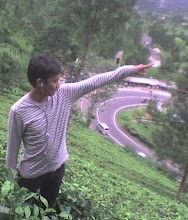In 1854, with the opening of Japan to foreign trade, the technologies developed in the West and rapidly introduced by many in Japan. This marked the era of the Japanese in 1914, the oldest of souls is shown for the first time in 1917 with a pair of two-minute clips of a fairy-tale comedy about a samurai warrior.
In 1930, the anime industry received a significant amount of interest in Japan. Unfortunately, the local Japanese animators had strong competition from foreign and local artists do. As a result, Japanese animators were forced to work at low cost and because the animation technique called cut animation, cell animation to choose more expensive. However, with the harvest of animation, such as Japanese animators Yasuji Murata were still able to create miracles. Later, when Mitsuyo Seo animators and improves the Masaoka of the Japanese countryside, including the use of cells, the animation and the introduction of sound.
In 1933, the first sound film was produced Masaoka souls called "Chikara to Onna no Naka I do not." This was in 1945 by the direction of the SEO "Devine Sea Warriors Momotaro," which was the first anime feature often. Achieving these Japanese animators were more worthy of praise because it was difficult to survive commercially. They had a strong influence on government support, the offer to take the duty of training and militaristic propaganda implies. In addition, Japanese animation, much of the success of the 1937 feature film, The Walt Disney Company, known as influence "Snow White and the Seven Dwarfs." For example, Osamu Tezuka began to imitate the American style cartoons in the cost and number of frames to save to restrict production and known then created the popular comic novel "Kara Shinta Jima" in 1947.
In 1970, the Japanese film market has declined due to increased competition from television, which eventually led to the failure of Mushi Productions has. However, he managed the work of Osamu Tezuka, to pass the competition. In fact, his work was so impressive that is often referred to as the "god of manga". Its distinctive "large eyes" style, the animation is still considered one of the fundamental elements of anime today. At this difficult time, a genre known as Mecha animation also presented "Mazinger Z" (1972-1974), "Science Ninja Team Gatchaman" (1972-1974), "Space Battleship Yamato" (1974-1975) and " Mobile Suit Gundam "(1979-1980).
Other milestones for the Japanese animation industry has included the provision of "Akira" in 1980, very popular in Japan and abroad, and the Tree of production in 1990 due to the release of "Ghost in the Shell". Moreover, in 2008 named the official ambassador of the Japanese government first anime Doraemon to promote worldwide. All these factors have led to the success of the animation industry in Japan we know today.







0 comments:
Post a Comment